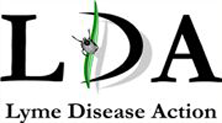If you think you might have Lyme disease,
see our Self Help page.
Lyme Disease Facts
- Lyme disease is an infectious disease caused by the bacterium Borrelia burgdorferi.
- It can be passed to humans by the bite of an infected tick.
- It cannot be confidently ruled out by any current test.
- It can be difficult to diagnose.
- Lyme disease symptoms overlap with those of many other conditions.
- Early symptoms may include headache, fatigue, fever, facial palsy and a skin rash called erythema migrans.
- The erythema migrans rash enables a diagnosis without the need for a blood test.
- It can spread to affect many parts of the body including the nervous system, eyes, joints and heart.
- If inadequately treated or treated late, some symptoms may not go away completely.
- Lyme disease is treated with antibiotics.
- Lyme disease was named in 1975, after a number of cases occurred in Old Lyme, Connecticut, USA.
- Lyme disease is not a new disease, it was known in mainland Europe under different names in the early 20th century and the bacterium was carried by Neolithic “Ötzi the Iceman“.
- The first confirmed case in the UK was reported in 1985.
- Ticks carrying Lyme disease can be found throughout the UK in urban parks and gardens as well as in the countryside, but the proportion of infected ticks is (at the moment) much lower in the UK than in most of Europe.
- Lyme disease is not spelt Lymes disease, Limes disease or Lime disease!
- Lyme disease is generally called Lyme borreliosis in mainland European countries.
- Lyme disease has lots of unknowns, see JLA Process
For a straightforward summary of ticks and Lyme disease in the UK, see an article on the Countryside Jobs Service website.

 Printer Friendly
Printer Friendly